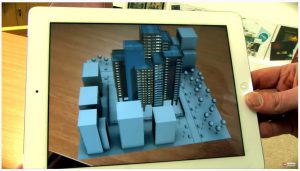Lift regulations play a pivotal role in the ever-evolving landscape of urban living. The verticalization of both residential and commercial developments has become a defining trend, with towering structures reshaping skylines globally.
Central to this transformative shift is the indispensable role played by elevators, transcending their conventional function to become keystones of these high-rise structures. As cityscapes ascend, so does the need for elevators to seamlessly integrate into the fabric of vertical living. Beyond mere convenience, elevators now symbolize accessibility, efficiency, and luxury in modern spaces.
However, as urban developers strive for greater heights, navigating lift regulations becomes paramount. Recognizing the pivotal role elevators play in ensuring safe and efficient vertical mobility, regulations become essential for elevating living standards in both residential and commercial settings. This article delves into the symbiotic relationship between elevators and regulations, exploring how stringent guidelines not only ensure safety but also elevate the overall quality and functionality of developments. Join us on a journey through the regulatory landscape, where precision meets progress in the pursuit of unparalleled vertical living experiences.
See also : Future Homes: Modular and Manufactured Innovations (IC)
The Increased Significance of Elevators
The surge in high-rise constructions worldwide is reshaping the landscape, driven by the increasing demand for housing and commercial spaces in urban areas. High-rise buildings have become symbols of modern living, accommodating a growing population while maximizing land use. With this vertical evolution, elevators have transitioned from functional elements to integral components of architectural design in both residential and commercial settings. Elevators have become aesthetic elements, featuring modern designs, glass facades, and ambient lighting, contributing to the overall ambiance of high-rise living and working environments. The latest generation elevators are designed with a keen focus on People Flow, emphasizing safety, efficiency, and a contemporary visual appeal. As urban spaces continue to evolve, the demand for elevators that complement the modern outlook of society is on the rise in both residential and commercial contexts.
Technological Advancements in Elevators
Modern elevators utilize cutting-edge technology to optimize People Flow within both residential and commercial buildings. Destination control systems intelligently allocate elevator cabins based on user destinations, reducing travel time and improving efficiency. IoT-enabled sensors monitor traffic patterns, automatically adjusting elevator operations to match user demand. Additionally, smart elevator systems offer features like predictive maintenance, identifying potential issues before they impact performance, thus enhancing reliability in both residential and commercial developments.
Regulatory Landscape: Challenges in Lift Regulations
Despite the recognition of the importance of elevator safety early on, challenges persist in establishing consistent regulations across different states in India for both residential and commercial developments. The enactment of the Bombay Lift Act in 1939 marked an early effort to address safety concerns. However, the lack of uniform guidelines poses a challenge, allowing unorganized players to compromise safety standards potentially. While global and reputable Indian companies adhere to strict safety norms, the absence of specified regulations leaves room for non-compliance among certain entities. The need for comprehensive and standardized guidelines across the country is evident, particularly with the construction boom in multi-storey buildings, whether for residential or commercial purposes.
NBC Guidelines : Lift Regulations that ensure Safety and Standardization
Essential Requirements for Lift Installation
Part 8, Section 5 of the National Building Code lays down comprehensive guidelines for the installation of lifts, ensuring they meet stringent safety and performance standards in both residential and commercial settings. These guidelines cover aspects such as structural requirements, electrical specifications, and safety features. For instance, specifications for elevator shaft construction, load-bearing capacities, and compliance with fire safety measures are outlined to guarantee a secure and standardized installation process in both residential and commercial developments.
Specifications Based on Residential Building Heights
Elevator specifications are linked to residential building heights, with guidelines outlined in IS 14665 and the National Building Code (NBC).
For buildings below 15 meters:
– One or more lifts may be installed based on the building’s needs.
– The lifts should have a capacity suitable for the expected number of occupants, typically accommodating 6 to 8 persons.
– Waiting times should be reasonable, considering the building’s usage, but not exceeding industry standards.
For buildings between 15 meters and 30 meters:
– A minimum of one eight-passenger fire lift is required, equipped with automatic doors and a speed sufficient to reach the top floor within 60 seconds.
– The waiting times should adhere to standard industry norms, balancing efficiency with safety.
– Other lifts in the building should meet NBC specifications for capacity and performance.
For buildings exceeding 30 meters:
– In addition to the fire lift, a stretcher lift is mandatory to facilitate the movement of stretchers or medical beds.
– The number of lifts should be determined based on detailed traffic analysis calculations, factoring in the expected user traffic.
– The speed of the lifts should be configured to serve the building’s height efficiently, balancing swift travel with safety.
– Waiting times should be optimized to accommodate the increased demand for taller structures, ensuring efficient vertical mobility.
Lift Regulations for Residential Developments: Ensuring Quality and Safety
Uniform guidelines for elevator installations in residential developments are essential for maintaining a consistent safety level. The National Building Code sets the standard for adherence to quality and safety norms. It specifies that imported elevator equipment must comply with European standards (EN 81/EN 115), ensuring alignment with globally recognized safety benchmarks. Further, the Bureau of Indian Standards (BIS) codes and Central Vigilance Commission (CVC) guidelines reinforce the need for quality assurance in apartments and public buildings, emphasizing that elevators adhere to standardized safety and performance measures.
Elevators in Residential Real Estate: Key Considerations and lift regulations for Homebuyers
Potential homebuyers should focus on specific safety parameters and technical specifications outlined in IS 14665 and relevant codes. These include features like emergency lowering and Automatic Rescue Devices (ARD) to ensure safe evacuation during power failures. According to IS 14665, the load capacity for home lifts should be between 204 kg (three passengers) and 272 kg (four passengers), with a car speed not exceeding 0.2 m per second. Homebuyers are advised to evaluate the design for the integrity of mechanical and electrical components. Understanding the purpose of the lift, whether it’s a light-duty or heavy-duty lift, is critical for ensuring it aligns with the residential building’s characteristics. Daily usage patterns should be considered, preventing potential issues and guaranteeing a reliable vertical living experience. Awareness of these specific specifications empowers homebuyers to make informed decisions based on technical precision and safety compliance.
See also Apartment Plan – Factors for design of residential apartment
Lift Regulations : Elevators in Retail/Office Buildings
The regulations recommend a system with two main lifts, each capable of carrying 1020 kilograms or 15 passengers for a multi-tenant office/retail building. These lifts travel 18.9 meters at a speed of 1 meter per second, with five total stops. The building’s population is estimated to be 596 people, and the control system for the lifts is duplex.
Further analysis suggests that the system’s handling efficiency is 12% during peak times, with an average wait time of 25 seconds, an average travel time of 32 seconds, and a total average destination time of 57 seconds. The nominal travel time, excluding wait and door opening/closing times, is calculated to be 63.5 seconds.
As high-rise developments ascend to new heights, enhancement of lift regulations emerges as a linchpin for success. Elevators have evolved from mere utilities to essential components that epitomise the synergy between regulatory diligence and technological advancement. By continually refining and adapting lift regulations, we can elevate vertical living experiences and cultivate a safer, more inclusive future. In this pursuit, the collaboration between urban developers, architects, and regulatory bodies catalyses a soaring paradigm of the built environment.
See also
Hope you have found value reading the article. We would like to hear your comments or feedback at [email protected].
For consulting opportunities and collaboration please reach our consulting firm Architecture Ensemble Design Studio or at [email protected]
{convertforms 8}






